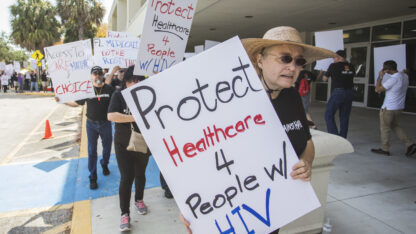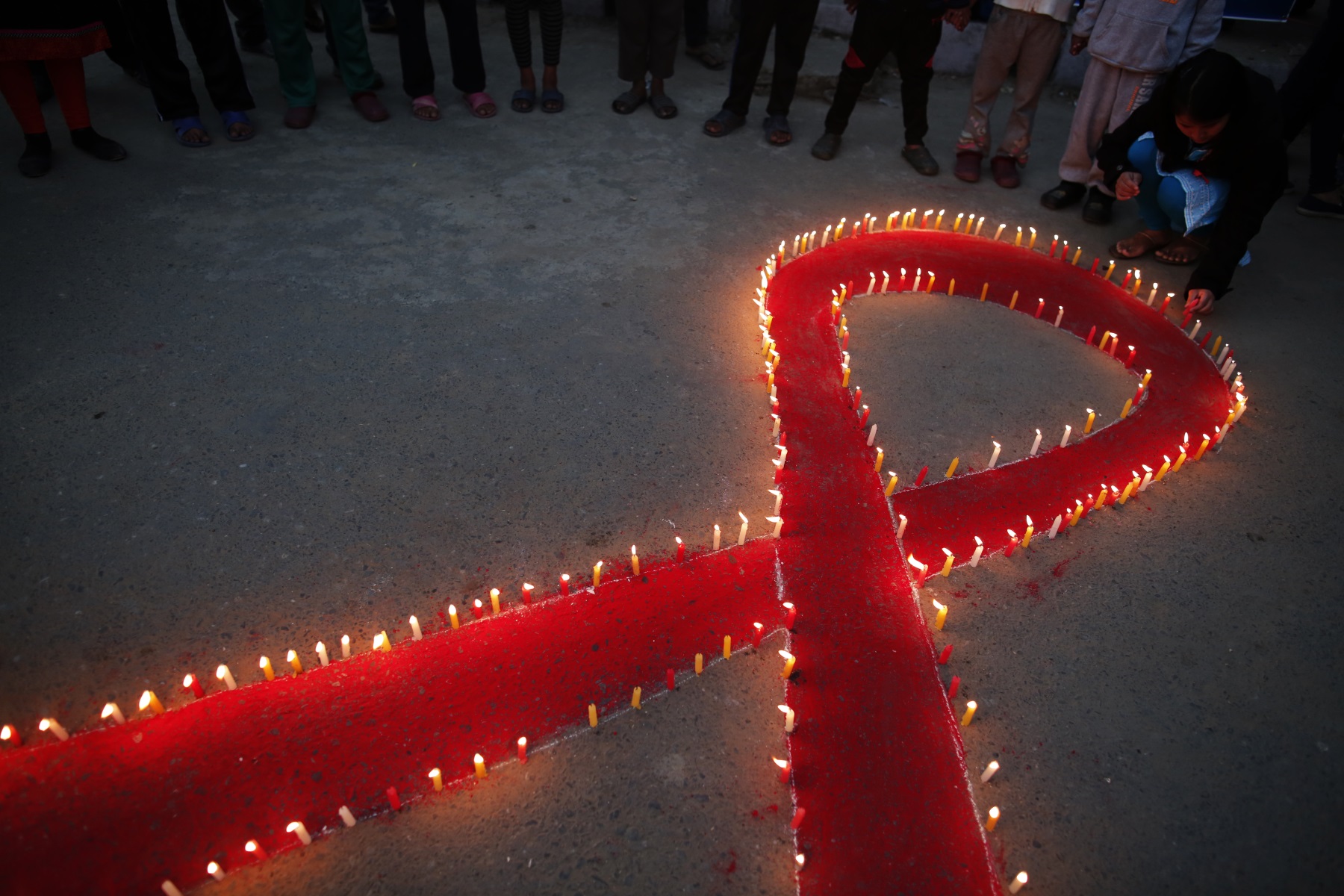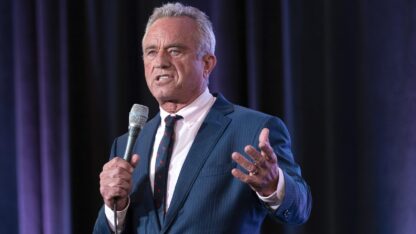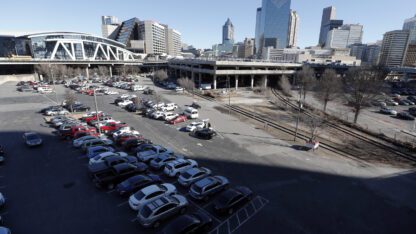“We have the tools we need to move forward safely and return to more normal routines,” President Biden wrote in early April.
Three years ago, under a different administration talking about a different virus, the message was exactly the same.
“We have the tools available to end the HIV epidemic,” then-Health Secretary Azar wrote in 2019 announcing the End the HIV Epidemic initiative. There are at-home HIV tests, a pill you can take daily to prevent HIV, and effective, easy-to-take treatments.
Despite all those tools, decades after it started, the HIV epidemic has not ended in the U.S. An estimated one in four people who might be eligible for the preventive pill actually take it. Around 150,000 people in the U.S. are HIV positive but don’t know it because they haven’t been tested. And more than 30,000 people in the U.S. test positive for HIV every year, a number that has remained stubbornly high, even as new tools have been developed.
When federal officials say “we have the tools” Brooks-Wiggins says, they’re missing the point. “There’s a human aspect to it that they’re discounting – people have emotional habits that they don’t break, and that’s how the virus thrives,” she says.
As with HIV, the COVID-19 situation is still precarious even though effective treatments are available. Cases skyrocketed in the winter despite widely available vaccines. Some 70 million Americans haven’t gotten even one shot of the vaccine, and around half of people eligible for a booster haven’t bothered to get one. The virus continues to spread and cause preventable deaths especially among people who are Black or Latinx, people who are poor, or uninsured, and people who live in rural places.
Only two years into the response, with restrictions like indoor masking mostly lifted and federal COVID funding drying up, Americans seem ready to move on and declare the pandemic over. But it’s far from over, and as with HIV, the country is poised to shrug its way through years more of unnecessary deaths.
Some public health experts are sounding the alarm. They warn that instead of pulling back, it’s time to double down on outreach efforts to connect with people whose lives can still be saved.
That message is especially clear coming from people whose lives and work have been affected by HIV for decades. They say there are lessons for this new pandemic from HIV about how hard it can be to get pandemic-fighting tools to the people who need them most.
Science alone won’t save lives
The road to effective and easy-to-take HIV treatments was rocky. The first treatment for people with HIV, called AZT, came along in 1987. It cost about $8,000 a year – at the time, the highest cost for a prescription drug in history.
It also made her feel so horrible, Brooks-Wiggins says, she stopped taking it. “I figured I would just rather feel better and be happy than be miserable, depressed and sick. And if I was going to die, I was going to die.”
Over time, the treatments got better – a lot better. Now, she says, “we’ve got down to taking them once a day with or without food.” And at age 76, Brooks-Wiggins is happy to still be alive and healthy – living in Baltimore and working part time as a tax preparer, while staying involved in local HIV peer support and advocacy.
“We’ve come such a long way – there are drugs that not only prolong people’s lives and really permit them almost a normal lifespan, but also prevent people from transmitting it,” says Dr. Adaora Adimora, an infectious disease physician and professor of medicine and epidemiology at the University of North Carolina at Chapel Hill. She first started treating people with HIV in the 1980s, and has watched the pharmaceutical industry roll out better and more convenient treatments and prevention tools, like topical gels, new pills, and injections that give long-lasting protection.
Still, she says, “I don’t know that I ever greeted any of these new advances saying, ‘This is the thing that’s going to end HIV.’ “And the reason is because, as a clinician, I’ve seen the barriers that there are to access to care and to implementation.”
Some of those barriers are the high cost of prescription drugs and the maddening patchwork health care system.
They also include the stigma of the disease, and for some communities, a distrust of the medical system that prevents them from seeking care, says Dr. Laura Cheever, who is Brook-Wiggins’s doctor and also runs the domestic Ryan White Program in the federal Health Resources and Services Administration, which provides free treatment to low-income people with HIV. “There’s still so much underlying stigma around the way HIV is transmitted and I think that is a huge barrier.”
All of this has led to certain communities being much more affected than others. As journalist Linda Villarosa documented in 2017 in the New York Times, America’s black gay and bisexual men have a higher HIV rate than any country in the world.
“Scientific discoveries are a necessary but not sufficient factor to completely eradicate disease,” says Adimora.
Keep the public’s focus
HIV’s scientific advances came about because of a powerful movement that helped to keep the crisis in public view and a priority for federal resources. In the 1980s and early 90s, those most affected by the HIV epidemic forced themselves into the center of discussions about how to address it.
“We used street activism and protests and the power of art, our own policy papers,” says Gregg Gonsalves, an epidemiologist at Yale who was involved in the AIDS Coalition to Unleash Power. “You just use every means at your disposal to keep pushing against the silence.”
The street protests grabbed headlines, while committees pushed for treatment advances and key studies. That work was instrumental in developing the tools policymakers now celebrate.
“The message from the AIDS movement is that people without rights and people who are despised socially can actually still change the world,” says Sarah Schulman, who was also involved in ACT UP and wrote an oral history about it called Let the Record Show. “And sometimes being outside of the system gives you a more creative way of looking at it.”
But in 1996, when highly effective new drugs became available, the dynamic changed, says Steven Thrasher, a professor of journalism at Northwestern and author of the forthcoming book, The Viral Underclass. “People who got access to the drugs began to pull away and take their political capital and go home because they didn’t need to be in the fight anymore. And the virus continued to pool in what I call a viral underclass in the United States.”
This was a sad and lethal mistake in the fight against HIV he says — and now it’s happening again with COVID. The lack of political will in Congress to pass more COVID-19 funding is a perfect example, he says. And those still at particular risk are those who are “warehoused away” he says – out of sight.
“People who are in nursing homes as elderly people or who are in convalescent centers as disabled people, and of course, people who are incarcerated – they’re already out of public view and people are not listening to them,” he says.
Those settings can act as “epidemic engines,” he explains. As people visit their loved ones in these places, staff come and go, back into the community, the pandemic drags on and more lives are needlessly lost.
Cheever notes that many of her patients , including Brooks-Wiggins, have been hard hit by both viruses. They have HIV, and they have also lost loved ones to COVID-19.
When it comes to COVID, Thrasher is disappointed that policy-makers and media seem to be orienting their work around the people who have the most access to tools to protect themselves, as mask rules end and testing centers shut down, rather than focusing on those who have the least access. “I really hoped that that would be different this time,” he says.
Gonsalves agrees. He says leaders who are trying to rush a return to normal would do well to remember: “Resignation is a luxury of people who have privilege and who have power and have the ability to ensconce [themselves] in their homes when the next wave comes,” he says.
Instead, he says, leaders should strive to practice “accompaniment,” a concept described by the late physician and global health activist Paul Farmer.
“You walk with the people who are going to be left behind and you don’t leave their side until they say they feel safe and they’re ready for you to leave,” Gonsalves explains. “You don’t turn your back on people and walk away, which is exactly what people are doing [now].”
Even “the unvaccinated” who are talked about dismissively by some federal officials deserve care, he adds. “Nobody gets left behind just because they make bad health choices – you don’t leave people behind.”
‘Just go get it’ isn’t good enough
As the tools and scientific understanding of HIV have advanced over the years, public health has struggled to find the right outreach approach. “It’s not that the tools aren’t there, but we don’t necessarily have a way to get the tools to the people and the people to the tools,” says A. Toni Young.
Young worked on HIV outreach for nearly 30 years in cities like San Francisco and Washington D.C. before an HIV resurgence in West Virginia brought her to rural America, where she runs an organization called Community Education Group that does outreach on HIV, drug use, COVID-19 – all things public health.
She says part of the problem early on in the HIV epidemic was that the public health message targeted certain groups. First it was gay men in big cities, then gay men and hemophiliacs and so on. In the meantime, she says, the risk to women and people of color and straight couples, and rural people wasn’t being communicated.
Now, she says, it’s time to say: “Stop, pump your brakes. We need to do this differently.” That starts with putting an end to assumptions about how people should respond to the available tools. “We keep doing the same thing over and over and over again saying: ‘It’s over there. Why don’t you go get it?’ “
When it comes to COVID, often these days when someone doesn’t go get the vaccine, she says, the attitude towards them quickly turns smug and accusatory. “You’re either with me on this vaccine or you’re not. You’re either on my side or you’re my enemy. You’re either a vaccine-denier or you’re a vaccine-getter,” she says. “There is a whole lot of room between those two.”
“The unvaccinated” are a big and complicated group. Among the 70 million Americans who haven’t gotten a COVID shot, some say they don’t trust the vaccine or the government, but more are just worried about side effects, according to a Census survey from December. Access is also still a problem – those who responded that it was hard for them to access the vaccine in the survey were more likely to be non-white and have disabilities.
The frame of “us versus them” is implicit in a lot of rhetoric these days about “getting back to normal.” It’s evident in terms like “pandemic of the unvaccinated,” and in describing vaccinated people as having “done the right thing” who should have special privileges, like not being subjected to indoor masking and testing requirements.
A ‘harm reduction’ approach
Young suggests, instead, an approach that goes beyond the “go get it” refrain. It involves meeting people where they are and thinking expansively about what they might need.
She explains how it works in her outreach in West Virginia: “I can offer you a COVID vaccination. You might say no,” she explains. “Okay, I’m going to step you down and say, ‘Would you like an influenza vaccination?’ You might say no. I’m going to ask you if you want an HIV test. I’m going to ask you if you want a [hepatitis] C test. I’m going to ask you if you need anything regarding homelessness being marginally housed. Do you need to be enrolled in the state Medicaid system?”
This is a different way of tackling the challenge of getting people vaccinated – a “harm reduction” approach. That’s the idea, drawn from the addiction drug treatment field, that it’s better to help patients be any amount safer than to dismiss them as unsaveable because they can’t or won’t quit drugs entirely. In this context, Young explains, it’s about focusing less on your goal to boost COVID-19 vaccination and more about the needs of the person you’re talking to
“If you’ve got five kids and y’all are hungry, you need to figure out where are you going to get food from – you don’t care about my vaccine,” Young says. “If I can get you the food, when we do the follow up: ‘Hey, how’d that food voucher work out? Great. Can we talk to you now again about the COVID vaccine?'”
That’s the kind of outreach that can connect the tools to the people who need them most but who may be unwilling or unable to seek them out themselves.
“We want to hit people in the face with the COVID vaccination because we’re in the middle of the pandemic,” she says. “But maybe I gotta slow walk you to that COVID vaccination.”
Her organization, Community Education Group, has a $3.5 million cooperative agreement with CDC to vaccinate people against COVID-19 and influenza in West Virginia. Young hopes CDC will continue funding it for three years so her team can put this approach into action across Appalachia for lots of different immunizations.
She also hopes to spread one of the lessons from HIV: that people and their relationship to health is complicated, and an effective public health response needs to meet them where they are.
Copyright 2022 NPR. To see more, visit https://www.npr.org.
9(MDAxODM0MDY4MDEyMTY4NDA3MzI3YjkzMw004))
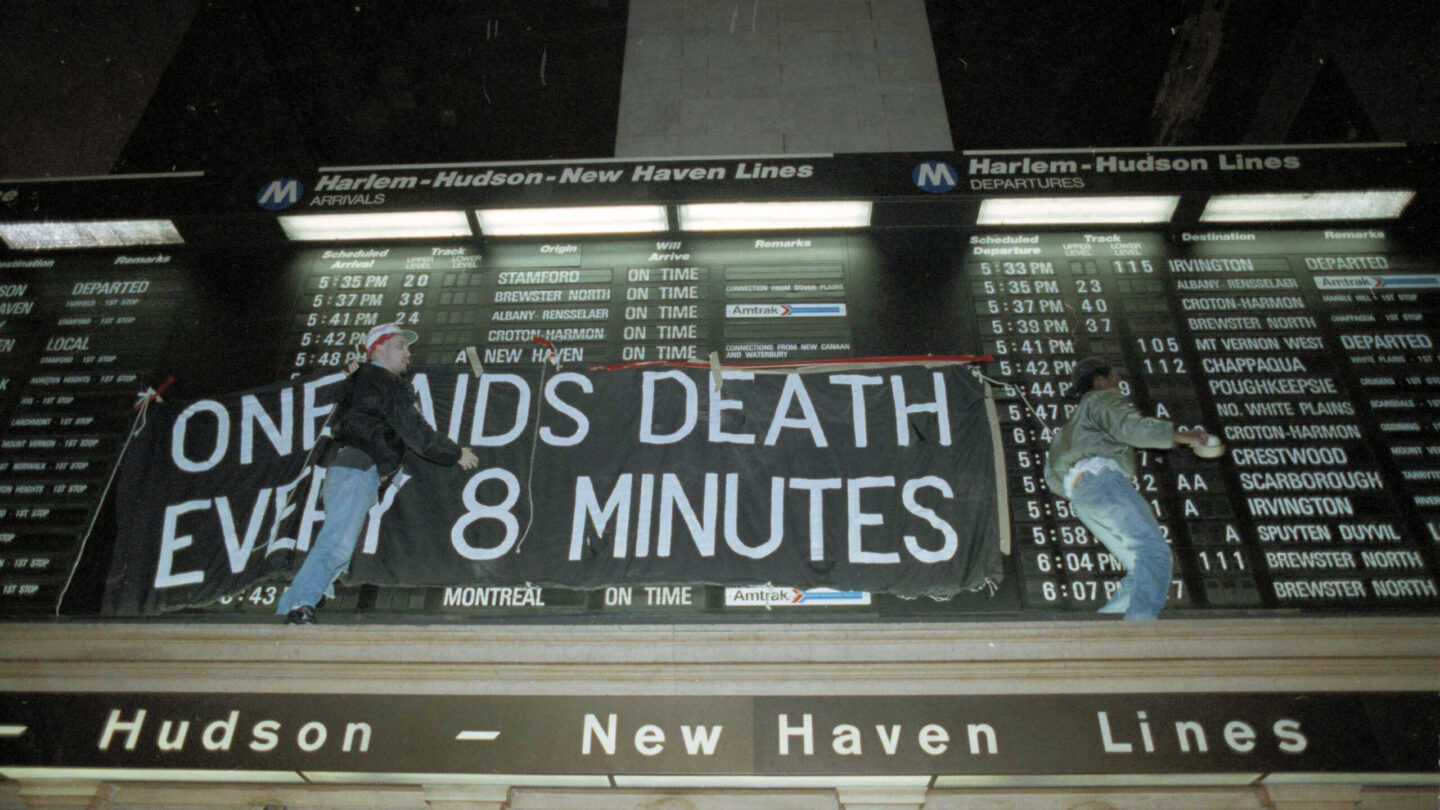
9(MDAxODM0MDY4MDEyMTY4NDA3MzI3YjkzMw004))
